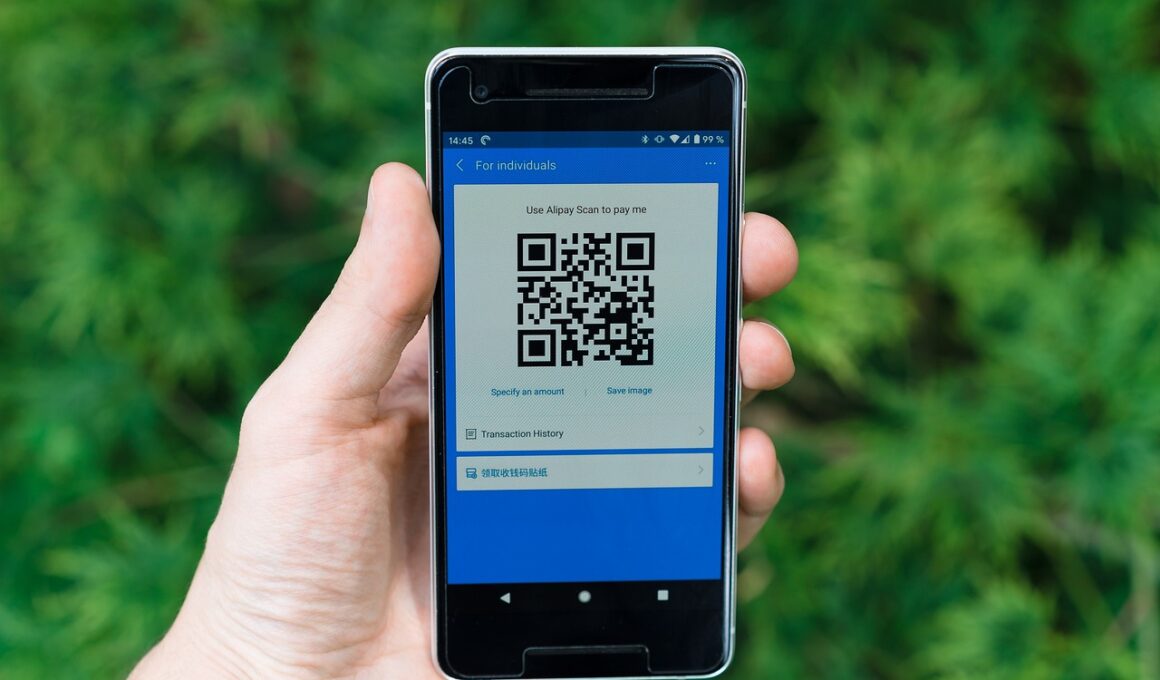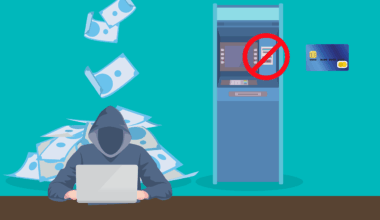Integrating Tokenization with Digital Wallets for Safer Transactions
In recent years, the advancement of digital payments has revolutionized consumer transactions, making them faster and easier. One significant component gaining traction in this space is tokenization. Tokenization replaces sensitive data, such as credit card numbers, with a unique identifier or a token. This practice increases security by reducing the chances of data breaches. When tokenization is effectively integrated with digital wallets, it offers enhanced protection against fraud, thereby fostering user trust. Digital wallets store these tokens securely, enabling users to make transactions without needing to reveal their actual card details. As a result, digital wallets equipped with tokenization capabilities provide an additional layer of security for consumers. This seamless integration allows users to enjoy convenience while maintaining their sensitive information’s privacy. In the ever-evolving digital payment landscape, adopting tokenization in digital wallets emerges as a critical strategy to combat the rising threat of cyber threats. Businesses must prioritize adopting such technologies to protect their customers and retain their trust, leading to increased adoption of digital payment methods globally.
The Mechanics of Tokenization
Tokenization works by transforming sensitive information into an unrecognizable format, rendering it useless for malicious entities. Each time a payment is initiated, that sensitive data is replaced by a token, which can be uniquely identified by the payment processor. Importantly, the actual card number is stored securely in a vault, separate from the transaction itself. This ensures that even if hackers attempt to intercept the transaction data, they cannot ascertain the original card information. Additionally, tokenization also helps with complying with regulations regarding data protection, such as PCI DSS, which mandates that businesses protect cardholder information. By not storing card data directly, organizations minimize their liability in the event of a data breach. Furthermore, tokenization has the potential to enhance customer experience; as users can conduct transactions quickly and safely without comparing various card numbers. As more consumers turn to mobile payments, the reliance on secure methods like tokenization becomes paramount. Companies focusing on improving their digital wallet’s tokenization features can differentiate themselves in a crowded marketplace, ultimately driving higher customer satisfaction and retention rates.
The adoption of mobile wallets has grown exponentially, with more consumers favoring contactless transactions over traditional payment methods. This shift can be attributed to the convenience offered and the increased security measures such as tokenization. When consumers use mobile wallets, their transaction experience is more streamlined than ever, thanks to the seamless flow integrated with various payment systems. Tokenization also plays a crucial role in ensuring that sensitive information remains secure throughout the transaction process. By sending a token instead of actual payment data, the chances of exposure are significantly reduced which guarantees peace of mind for users. Additionally, digital wallets that employ tokenization can offer enhanced features such as loyalty programs or rewards tailored to user preferences. This personalized approach to payments not only builds loyalty but also encourages the adoption of digital payment systems. With tokenization, companies can emphasize their commitment to protecting their customers’ sensitive data while enriching their overall payment experience. As a result, leveraging tokenization in this manner helps in fostering a secure and rewarding environment for digital wallet users.
Challenges of Implementing Tokenization
While the benefits of tokenization in digital wallets are clear, several challenges remain for companies seeking to implement this technology. Initially, integrating tokenization systems requires significant investment in updates and training. Organizations must ensure their existing infrastructure can effectively support the new tokenization system. Additionally, there may be resistance or pushback from employees unfamiliar with this technology, necessitating proper education and training efforts. Furthermore, partnering with trusted payment tokenization providers is crucial and may present another obstacle due to the abundance of options available. Companies must carefully evaluate the best solutions to meet their specific needs while ensuring compliance with industry regulations. Moreover, as tokenization becomes more widespread, consumers must be aware of its benefits and understand how it works. Communication about these advantages is vital to increase trust and encourage adoption. Finally, ongoing maintenance and updates of the tokenization system can also present challenges as technology and threats evolve rapidly. Companies must remain vigilant in adapting to the changing landscape of cybersecurity while ensuring a consistently secure and smooth experience for users using their digital wallets.
Collaboration between stakeholders is essential for realizing the full potential of tokenization in digital wallets. Financial institutions, merchants, and technology providers must work together to enhance the security and streamline the overall usability of these payment systems. By fostering partnerships, businesses can develop innovative solutions that incorporate tokenization as a key component of protecting transactions. This cooperation can lead to shared knowledge and experience in addressing customer concerns and building a stronger foundation for trust. Additionally, the development of industry standards can help define expectations regarding safety and interoperability. Such standards will help streamline the tokenization process and facilitate easier integration among various platforms, resulting in a more cohesive experience for end-users. As a collaborative effort emerges, it can pave the way for businesses exploring other avenues to enhance their digital wallets and implement other innovative security measures. Ultimately, when industries unite to bolster security and convenience for transactions, the future of digital payments looks promising. Companies that understand the benefits of tokenization and invest accordingly can position themselves at the forefront of this digital payment revolution, attracting more customers and building greater loyalty.
The Future of Digital Wallets
Looking ahead, the integration of tokenization with digital wallets will likely evolve as technology advances. Innovations that incorporate artificial intelligence, biometrics, and real-time fraud detection will further enhance the security and reliability of mobile transactions. These technologies can analyze user behavior patterns and adapt transaction protocols accordingly, resulting in a more proactive approach to fraud prevention. In this landscape, tokenization will continue to serve as an essential framework for ensuring secure transactions between consumers and merchants. Moreover, the importance of a customer-centric approach will only grow, with emphasis on user experience as a pivotal aspect of the digital payment journey. Businesses will need to prioritize understanding consumer preferences and expectations to create tailored payment solutions. Additionally, as regulatory environments develop globally, companies will be compelled to maintain strict adherence while continuing to innovate their payment offerings. This dynamic interplay between regulation, technology, and consumer behavior will shape the future of digital wallets and how they utilize tokenization. Companies that remain agile and responsive to these developments will be better positioned to thrive within this rapidly changing market, ensuring long-term success.
In conclusion, the integration of tokenization with digital wallets represents a significant advancement in enhancing transaction security. As our dependence on digital payments continues to rise, businesses must adapt to shifting consumer preferences by offering secure, user-friendly payment solutions. Tokenization plays a critical role in protecting sensitive information while delivering a seamless experience for users. Nonetheless, challenges exist that must be addressed through collaboration among stakeholders, technological updates, and improved consumer education. As businesses navigate this complex landscape, they have the opportunity to differentiate themselves by leveraging tokenization as a key selling point. Customers naturally gravitate towards brands that prioritize their safety and privacy, so enhancing user trust should remain a top priority. Furthermore, as the industry continues to evolve, keeping an eye on emerging trends and technologies will be essential for remaining competitive. The prospects for the future of digital payments appear bright, and organizations that invest in innovative security measures like tokenization will undoubtedly reap the benefits. By doing so, they can create a secure, efficient, and rewarding digital payment experience that meets the needs of their consumers.
Reinforcing Customer Trust through Tokenization
Building customer trust is essential for any successful payment system, and tokenization plays a pivotal role in reinforcing that trust. By securely processing transactions, consumers feel more confident in using digital wallets for their everyday purchases. A key aspect of maintaining this trust involves transparency in how tokenization functions within the payment ecosystem. Companies should prioritize educating consumers about the protective measures in place that safeguard their sensitive information. Providing resources such as tutorials, FAQs, and customer support can help demystify the technology and ease any apprehension users may have regarding its security. Moreover, businesses should promote the safety features of tokenization as part of their marketing efforts. Highlighting the fact that their systems utilize cutting-edge technologies to protect data can reassure customers while differentiating their services from competitors. Regularly communicating the measures taken to enhance security helps reinforce confidence in a company’s commitment to safeguarding customer information. As customers increasingly expect a streamlined and secure payment experience, the emphasis on trust becomes ever more critical. Companies that prioritize these strategies will cultivate lasting relationships with their customers, leading to greater satisfaction and loyalty.


